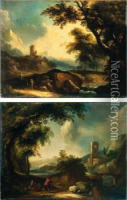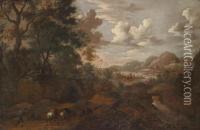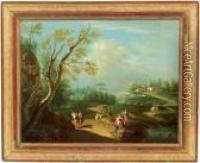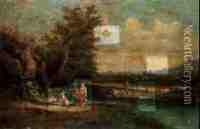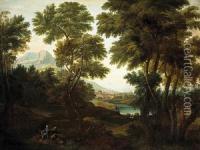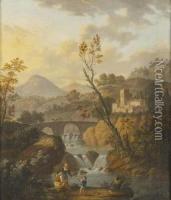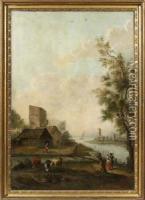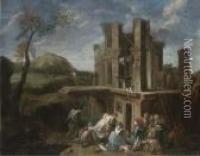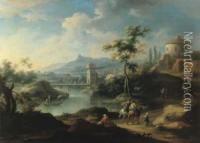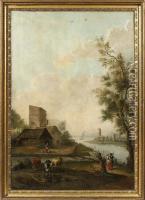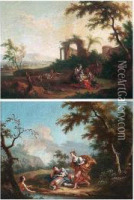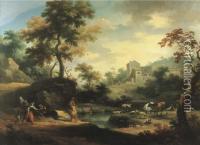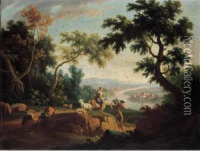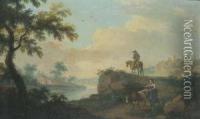Vittorio Amedeo Cignaroli Paintings
Vittorio Amedeo Cignaroli was an Italian painter, primarily of historical and religious subjects, born in 1730 in Turin, Italy. He was part of a family of artists and became one of the most prominent painters in Turin during the second half of the 18th century. His uncle, Giuseppe Cignaroli, was also a well-known painter, and it is likely that Vittorio Amedeo received his initial training in his uncle's workshop.
Cignaroli's style was influenced by the Baroque tradition, and he was particularly inspired by the works of French and Dutch masters. Over time, his style evolved, showing an increasing interest in the use of light and a softer, more rococo color palette. Despite the shifts in artistic trends throughout his career, Cignaroli managed to maintain a successful practice by adapting his style to suit the tastes of his patrons.
His works can be characterized by their dramatic compositions, often imbued with a certain emotional intensity. Cignaroli was skilled in creating narrative scenes, and his religious paintings often conveyed a sense of spirituality and contemplation. He also painted portraits and some genre scenes, reflecting the daily life of his time.
In addition to painting, Cignaroli also engaged in teaching, passing on his artistic knowledge to the next generation of painters. His influence was felt not only through his own works but also through the contributions of his students.
Vittorio Amedeo Cignaroli's works can be found in various churches and collections in Italy, particularly in the region of Piedmont, where he spent most of his life. Despite not being as widely known today as some of his contemporaries, Cignaroli's art represents an important chapter in the history of Italian painting, bridging the Baroque and Rococo periods.
The artist passed away in 1800, leaving behind a legacy of work that continues to be studied and appreciated by art historians and enthusiasts for its historical and aesthetic significance.
